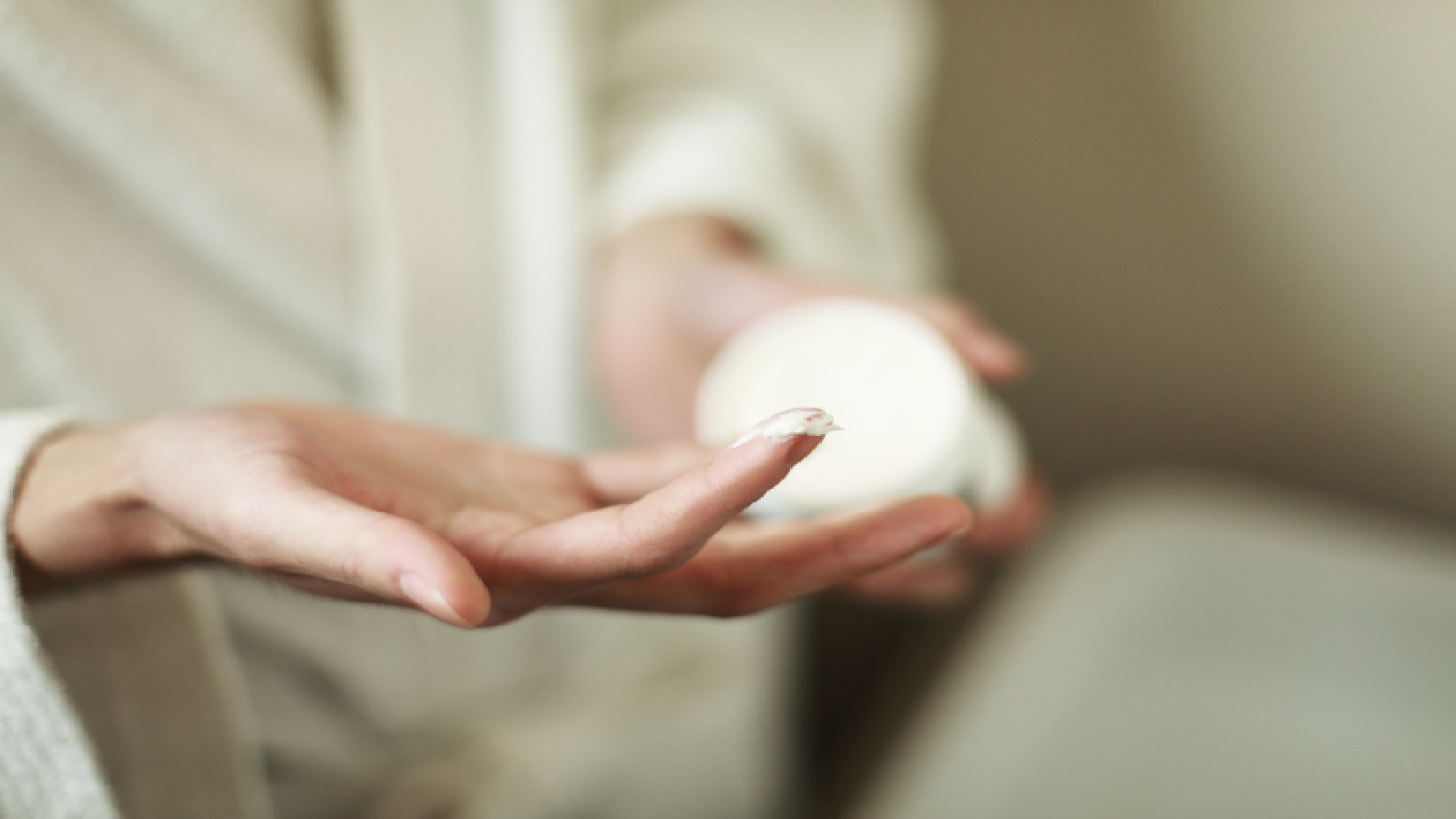What are emollients and how do they work?
Emollients and moisturizers aren't quite the same thing—and it's worth knowing about both


Emollients are just one thing we can use to keep our skin soft and supple. If you've read our review of the best moisturizers, you'll know there is more than one type, and different formulas are suited for different skin types. The moisturizer you use today may contain an emollient that helps soften your skin, but what does an emollient actually do?
Many people think that emollients are just another word for moisturizer, but this isn't the case. Moisturizers can soften your skin in several ways, sometimes using emollients, but not all moisturizers contain this ingredient. Emollients can be found in both moisturizers and shampoos, but in this review, we'll concentrate on using them in your skincare routine.
So let's get to it. How do emollients work to keep your skin smooth and wrinkle-free?
What are emollients?
Emollient actually means softener, and that's exactly what it does. It takes rough, dry, cracked, and flaky skin and makes it look and feel better. Over time, the top layer of your skin, called the epidermis, can become dry. The space between cells begins to spread apart, causing your skin to crack and flake. Emollients rush in to fill those cracks with fatty substances, also called lipids. This makes your skin feel better, softer and smoother.
There are different ways to heal your skin, including occlusive agents. Occlusive agents coat your skin in an oily substance that traps water against the epidermis. Emollients are an occlusive agent, and this is one of the ways it protects your skin. Although all emollients are moisturizers, not all moisturizers contain emollients. Emollients are just one tool that moisturizers can use to keep your skin soft and supple.
What are the benefits of emollients?
Modern living is rough on our skin. Pollution gets into the cracks between our cells and damages our skin. We wash far more often than our ancestors, and while washing does a great job of removing dirt and bacteria, it removes the natural oils that protect our skin. Emollients help us replace that lost moisture when we need it most:
- When used in skincare, emollients help replace the natural loss of moisture in skin cells that can cause wrinkles and other signs of premature aging.
- Emollients form a protective oily barrier around your skin, preventing skin irritation from harsh, drying soaps like dishwashing liquids.
- Emollients prevent skin dehydration caused by excessive heat from the sun, indoor heaters, and hot showers and baths.
Are there any side effects of using emollients?
Although emollients have no major side effects, people with oily skin may want to take care when using moisturizers with emollients. Emollients use oil to protect and smooth skin. When people with oily skin use an emollient-based product, it can clog pores. Clogged pores are not only bad for your skin but can lead to pimples, blackheads, and whiteheads.
Sign up for the woman&home newsletter
Sign up to our free daily email for the latest royal and entertainment news, interesting opinion, expert advice on styling and beauty trends, and no-nonsense guides to the health and wellness questions you want answered.
When to use emollients (and when not to)
Emollients are an effective way to care for dry, irritated skin. If you're looking for an anti-aging moisturizer and you have naturally dry skin, an emollient-based formula might be the right choice for you.
Emollients not only work to protect the skin from harm, but they can help soothe the red, dry, irritated patches caused by conditions like diabetes, eczema, kidney disease, diaper rash, psoriasis, hyperthyroidism, and dermatitis
It's worth noting that ointments and creams with emollients are more susceptible to bacterial contamination, so they usually contain a larger than normal amount of preservatives. If you have sensitive skin, you may be allergic to these preservatives. If you see any sign that your moisturizer is making your skin worse, not better, this may be why.
How to use and apply emollients
Experts suggest putting a small amount of emollient-based moisturizer on your skin and gently massaging it. You should avoid rubbing with too much force as you don't want to damage the skin. Always rub it downward away from hair growth to avoid clogging your pores. Some key times to use an emollient-based moisturizer are:
- After washing your face. According to the American Academy of Dermatology, the best time to apply moisturizer is when your face is damp, so the water gets locked next to your skin.
- Before applying your makeup. Using a moisturizer before makeup can protect your skin.
- Before bed. Contact with your pillow can dry your skin, and moisturizing before bed prevents this.
- Before and after plane trips. The air on airplanes tends to be very dry; moisturizing before and after trips will keep your skin soft.
- After a shower or bath. Moisturizing after a shower or bath can undo damage caused by strong soaps.
Whether you use an emollient in your skincare routine will depend on your skin concerns and whether you have any sensitivities to the added preservatives in the overall formula. For most people, though, emollients make for a high-beneficial addition to skin care.
A lifelong creative writer and beautyphile, Eunice Lucero-Lee graduated from De La Salle University in 2002 and was hired a year later to front all beauty coverage for Pink Magazine. A beauty, astrology, and pop culture obsessive and insider for over 18 years, Eunice is an internationally published editor (and now certified astrologer) whose work has been featured in publications such as Cosmopolitan, Esquire, and The Numinous, among many others.